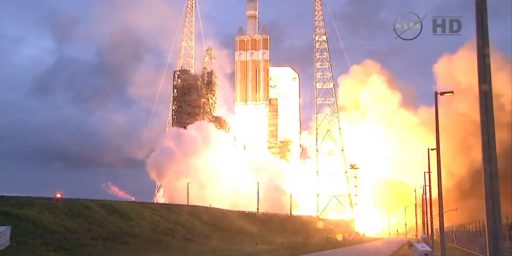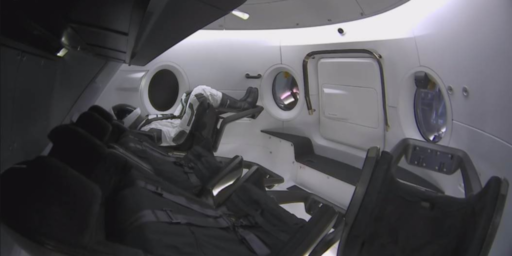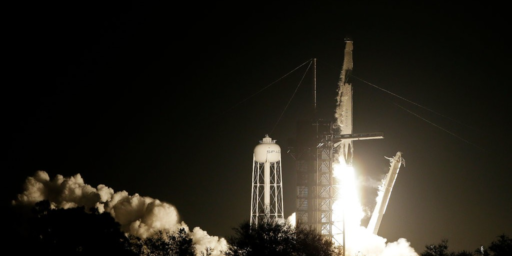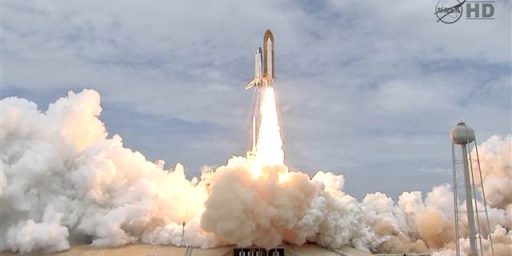Scramjet: NASA Shoots for Mach 10
With ‘Scramjet,’ NASA Shoots for Mach 10 (WaPo)
They call it a “scramjet,” an engine so blindingly fast that it could carry an airplane from San Francisco to Washington, D.C., in about 20 minutes — or even quicker. So fast it could put satellites in space. So fast it could drop a cruise missile on an enemy target, almost like shooting a rifle.
Next week, NASA plans to break the aircraft speed record for the second time in 7 1/2 months by flying its rocket-assisted X-43A scramjet craft 110,000 feet above the Pacific Ocean at speeds close to Mach 10 — about 7,200 mph, or 10 times the speed of sound. The flight will last perhaps 10 seconds and end with the pilotless aircraft plunging to a watery grave 850 miles off the California coast. But even if the X-43A doesn’t set the record, it has already proved that the 40-year-old dream of “hypersonic” flight — using air-breathing engines to reach speeds above Mach 5 (3,800 mph) — has become reality. Unlike rockets, which must carry oxygen with them as a “combustor” to ignite the fuel supply, scramjets take oxygen from the atmosphere, offering a huge savings in aircraft weight, and researchers around the world would like to take advantage.
In northeast Australia, a scramjet team funded by the U.S. and Australian armed forces will try for Mach 10 next year as a first step in using a scramjet to put satellites in space. The U.S. Air Force hopes to demonstrate within five years a scramjet-driven cruise missile fast enough to drive explosives deep into hardened targets. Other projects are moving forward in France and Japan.
Under NASA’s $250 million Hyper-X program, engineers at Langley Research Center here and the Dryden Flight Research Center in Edwards, Calif., designed and built three aluminum scramjet aircraft, each one 12 feet long and weighing about 2,800 pounds . Controllers aborted the first test flight in 2001 after the rocket booster malfunctioned. But the second, on March 24, reached Mach 6.83 (5,200 mph), shattering the world speed record for air-breathing, non-rocket aircraft, previously held by a jet-powered missile. The highest speeds by manned aircraft were achieved by SR-71, the U.S. spy plane known as the “Blackbird,” capable of flying in excess of Mach 3 (2,300 mph).
Very cool.
Update: A better pic:







Totally awesome.
I remember watching footage from the successful test flight, they needed quite a powerful rocket just get the the scramjet up to speed so that it would work.
Uh…this won’t work outside the atmosphere. The principle of the scramjet is that it uses the oxygen available in the atmosphere to combust the fuel, so it saves cost by not having to carry its own oxidizer. While great for travel on Earth, this has no application for interplanetary travel. For that, you’ll probably have to look at the work NASA and others are doing on ion engines.
Re: DC
Or Nuclear Pulse Engine that Pratt & Whitney are working on.